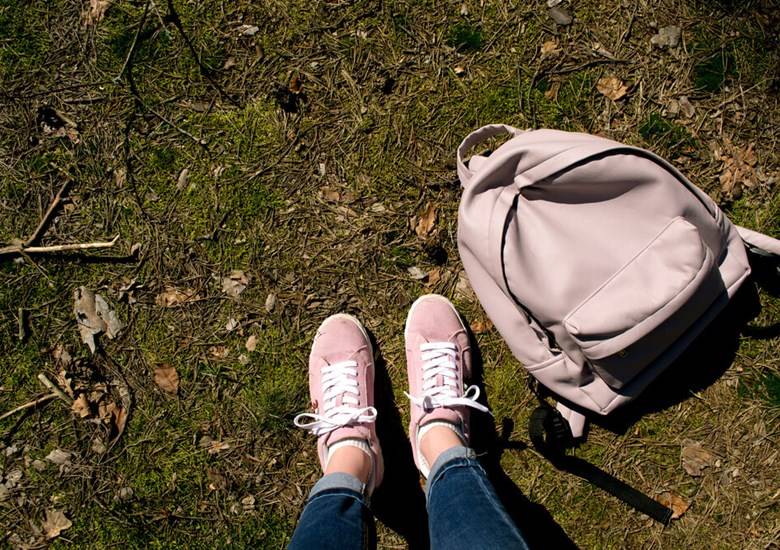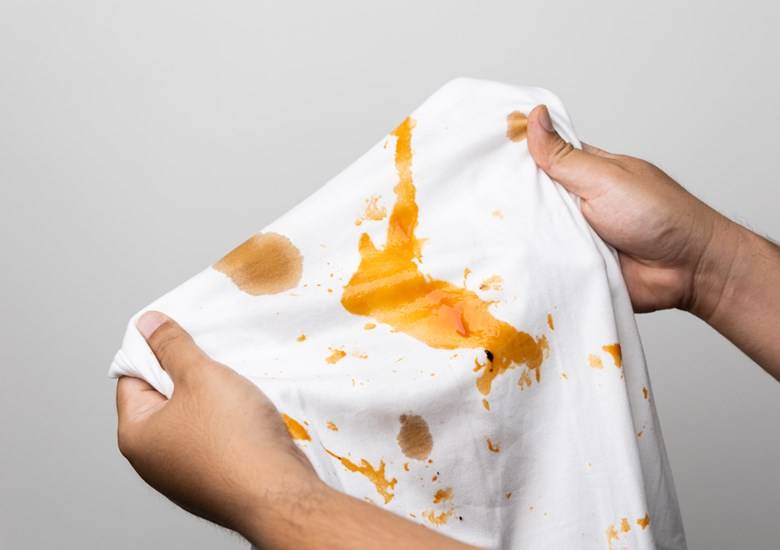How to Remove Stains from Bags


Dealing with stubborn stains on your family's clothes can be a never-ending battle. Whether it’s a coffee spill on your favourite shirt or a pen mark on your child's school uniform, we've got you covered.
Here you’ll find the knowledge and techniques to tackle even the toughest stains with confidence. From pre-treating the stain to laundering the garment, we’ll walk you through each step on how to try to remove stains from clothes.
We will take you through the common misconceptions about stain removal for clothes with additional tips for stubborn stains. It’s also important to note that different fabric types require different care, so you will also find tailored advice for specific fabrics, delicate garments and children's clothes. It doesn’t matter whether it is a dirty mark on your staple dress or an oil stain on your favourite shirt, you’ll have all the tools and knowledge to become a stain removal expert. So, let's dive in and discover the secrets of successful stain removal. on your favourite shirt, you’ll have all the tools and knowledge to become a stain removal expert. So, let's dive in and discover the secrets of successful stain removal.
The first step is very simple: identify the type of stain you are dealing with. Different stains require different treatment approaches, so once you have spotted a mark on your clothes, knowing what kind of stain it is will help you choose the most effective method for removal. To identify the stain you want to remove, start by examining the colour, texture and smell. This can give you clues about the substance that caused the stain. Understanding the characteristics of each stain type is very important in making sure you take the best course of action for successful stain removal.
Having the right tools and products on hand is essential for effectively removing stains from your clothes.
To ensure a successful outcome, gather the following supplies:
Before applying any stain removal method to your clothes, it’s crucial to test for colour fastness. This step ensures that the stain removal process is safe and prevents potential damage to the fabric. Choose an inconspicuous area of the garment, such as the inside seam or hem. Apply a small amount of the stain remover or product that you plan to use and gently blot the area with a clean cloth or sponge. Then, check if any colour transfers onto the cloth or if the fabric is damaged in any way.
For daily and fresh food stains, such as tea or fruit juices, start by blotting the stain with a clean cloth or sponge. Then, you can apply a small amount of liquid detergent directly to the stain and gently agitate it using a soft-bristle brush. Rinse the garment thoroughly after treatment. If you are looking for a practical solution, you can apply Vanish Oxi Action, as this can remove some stains in as quickly as 30 seconds. This is a great option for use on everyday fabrics, like cotton and polyester, as well as colours and whites.
Oil-based stains, like grease or makeup can be tricky to remove. Begin by blotting the stain with a clean cloth to absorb any excess oil. Then, you can use Vanish Oxi Action to tackle the toughest stains, even with cold water. Its Oxi Action formula is safe to use on different types of fabrics such as cotton and polyester, colours and whites. On top of removing stains, the pink version helps to protect colours and the white version is ideal to brighten white clothes.
Once applied the mix with water, simply leave it to stand for a maximum of five minutes before adding it to the washing machine.
Ink stains can be stubborn, but they can be effectively treated with the right method. Blot the stain with a clean cloth to remove any excess ink. Apply a small amount of stain remover. Then, gently blot the stain until it fades away.
For liquid stains, such as coffee or wine, blot the stain gently with a clean cloth or sponge. Avoid rubbing the stain vigorously, as this can spread the stain or push it deeper into the fabric. Instead, use a dabbing motion to lift the stain and you can then apply Vanish Oxi Action to pre-treat and remove the stains.
For solid or dried stains, like chocolate or mud, gently scrape off any excess debris using a dull knife or spoon. Then, use a soft-bristle brush or a clean toothbrush to lightly scrub the stain in a circular motion. This will help loosen the stain particles and make it easier for the stain remover to work. Always remember to always be gentle when agitating the stain to avoid damaging the fabric.
Start by rinsing the garment under cold running water. This will help flush out any remaining stain remover or detergent. Gently rub the fabric together to further loosen any lingering stain particles.
Once you’ve rinsed the garment, carefully inspect it for any residual stains. Check the area where the stain was located and examine the fabric in different lighting conditions. If you notice any remaining marks, repeat the stain removal process or try an alternative method.
Proper laundering will not only remove any remaining traces of the stain but also leave your clothes fresh and clean. Start by checking the care label on the garment for specific washing instructions. Follow the recommended washing cycle, water temperature and laundry detergent. For tough stains, you may consider adding a stain remover booster to your regular detergent.
Place the garment in the washing machine and select the appropriate settings. Avoid overcrowding the machine to allow for proper agitation and rinsing. Once the cycle is complete, remove the garment promptly to prevent wrinkles and mildew.
After laundering, inspect the garment to ensure that the stain has been completely removed. If any traces of the stain remain, repeat the stain removal process or try an alternative method.
After laundering the garment, it is important to inspect it thoroughly to ensure that the stain has been completely removed. This step will help you identify any lingering marks and take appropriate action to address them.
Start by examining the garment in good lighting conditions. Check the area where the stain was located and inspect the fabric from different angles. Look for any discolouration, residue or faint marks that may indicate the presence of a residual stain.
If you notice any lingering stains, you can repeat the stain removal process using the same method or try an alternative approach. For stubborn stains, you may consider seeking professional assistance or using specialised stain removal products.
Properly drying the garment is crucial to avoid potential damage or reoccurrence of the stain. Follow these tips to ensure the best results:
Remember to always test any stain removal method on a small, inconspicuous area of the garment before applying it to the stain.
Now that you've mastered the art of stain removal, it is time to focus on prevention.
Stains can happen anytime, anywhere – so being prepared for emergency stain removal can prove to be very handy. Whether you are at work, on a day out or travelling, these quick and easy methods will help you tackle stains promptly, minimising their impact on your clothes.
There’s no worse feeling than removing your clothes from the washing machine to find that they still smell. One of the best ways to eliminate odours right away is to use the Vanish Oxi Action. As well as being a powerful stain remover, its formula has hygiene boosters, which cleans laundry deeply, removing odours caused by heavy stains.
To use, start by pre-treating the stain by saturating it completely. Then, to wash, add one scoop to 7 litres of max 40ºC water. Leave whites for a maximum of six hours and colours for a maximum of one hour. It’s also safe to use in washes alongside your detergent—just add one scoop in the wash.
You may oly nnotice a stain on a garment long after it has happened. Set-in stains can be particularly challenging to remove, but don't worry, here are some methods you can try:
From baby food spills to grass stains, these common stains can be tough to tackle. Here are some tips and tricks specifically tailored to the removal of stains from children's garments and stains on baby clothes:
Rinse thoroughly to guarantee there are no residues in the clothes.
Congratulations! Hopefully you now feel like a stain removal expert. By following our tips and techniques, you can confidently tackle any stain that comes your way. Remember to act quickly, identify the stain type and use the right methods to help successfully with the removal of stains from clothes. So, whether you are dealing with delicate fabrics or stains on your children's clothes, we've covered it all. So go ahead and tackle those tough stains with confidence!
*Successful results are not guaranteed. Always check labels and follow product instructions.

